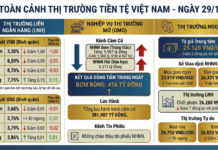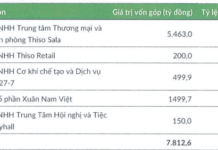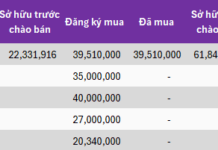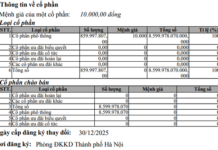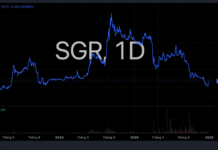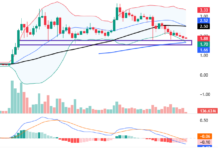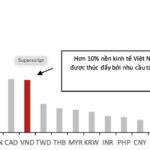
Vietnam’s Economic Journey: A Decade of Growth and Development
According to data from the International Monetary Fund (IMF), it took Vietnam 37 years to reach a tenfold increase in its GDP, climbing to $400 billion from approximately $43 billion in 1986.
Specifically, Vietnam’s GDP, in current prices, stood at $43 billion in 1986. By 2008, this figure had tripled to $125 billion. It took the country 23 years to surpass the $100 billion mark for the first time.
In the following years, Vietnam’s economy continued its upward trajectory, and it only took 15 years to increase from $100 billion to $400 billion. Specifically, Vietnam’s GDP reached $408 billion in 2022 and further expanded to $433.7 billion in 2023.
IMF projections indicate that Vietnam will be among the 35 largest economies in the world by 2024. Specifically, Vietnam’s GDP is forecast to reach approximately $465.8 billion, ranking 5th in the region, after Indonesia ($1,470 billion), Thailand ($548.89 billion), Singapore ($525.22 billion), and the Philippines ($471.5 billion).

Vietnam’s Projected Economic Growth: 2024 and Beyond
Notably, IMF experts predict that by 2029, with a projected GDP of $684 billion, Vietnam will surpass Singapore, which is estimated to reach $896 billion, to become the 4th largest economy in Southeast Asia and the 31st largest economy globally.
During the Regular Government Meeting with the Standing Subcommittee on Socio-Economic Affairs held in early September, Prime Minister Pham Minh Chinh proposed a target to elevate Vietnam to the group of 30 to 35 largest economies in the world and among upper-middle-income countries.
To achieve this ambitious goal, the Prime Minister emphasized the need to propose mechanisms and policies to mobilize social resources, especially public-private partnerships and foreign resources, both direct and indirect. He also stressed the importance of continuing to focus on the three strategic breakthroughs and further enhancing the content related to the development of science, technology, and innovation, particularly in emerging sectors such as green, digital, circular, knowledge, and sharing economies, as well as cultural industries.
Additionally, there should be a continued emphasis on institutional reforms and improvements, especially in the socialist-oriented market economy, with the State playing a leading role and enterprises as the central driving force.
“The Devastating Impact of Storm Yagi: A $40 Billion Blow”
The Ministry of Planning and Investment estimates that Typhoon Yagi caused 40 trillion VND ($1.7 billion) in damages to northern provinces, resulting in a 0.15% decrease in this year’s GDP compared to previous forecasts.
The Economic Zone, Spanning the Size of Hanoi’s Inner City, Features a Host of Industrial Parks, Sea Ports, and a Future Private Airport
The Thai Binh Economic Zone in Tien Hai will be home to a coastal specialized airport by 2030. In addition to this, the area will also see the development of a seaport capable of accommodating ships up to 50,000 tons. This ambitious plan showcases a commitment to transforming the region into a bustling hub of activity, connecting it to both domestic and international markets.
The American Dream: Elevating Vietnamese Exports
The strong demand for “Made in Vietnam” products from American consumers has boosted the country’s export recovery to the US. Exports, which had declined by 21% in the first seven months of 2023, surged to a 24% increase in the same period this year, propelling manufacturing activity to a robust 10% growth.







